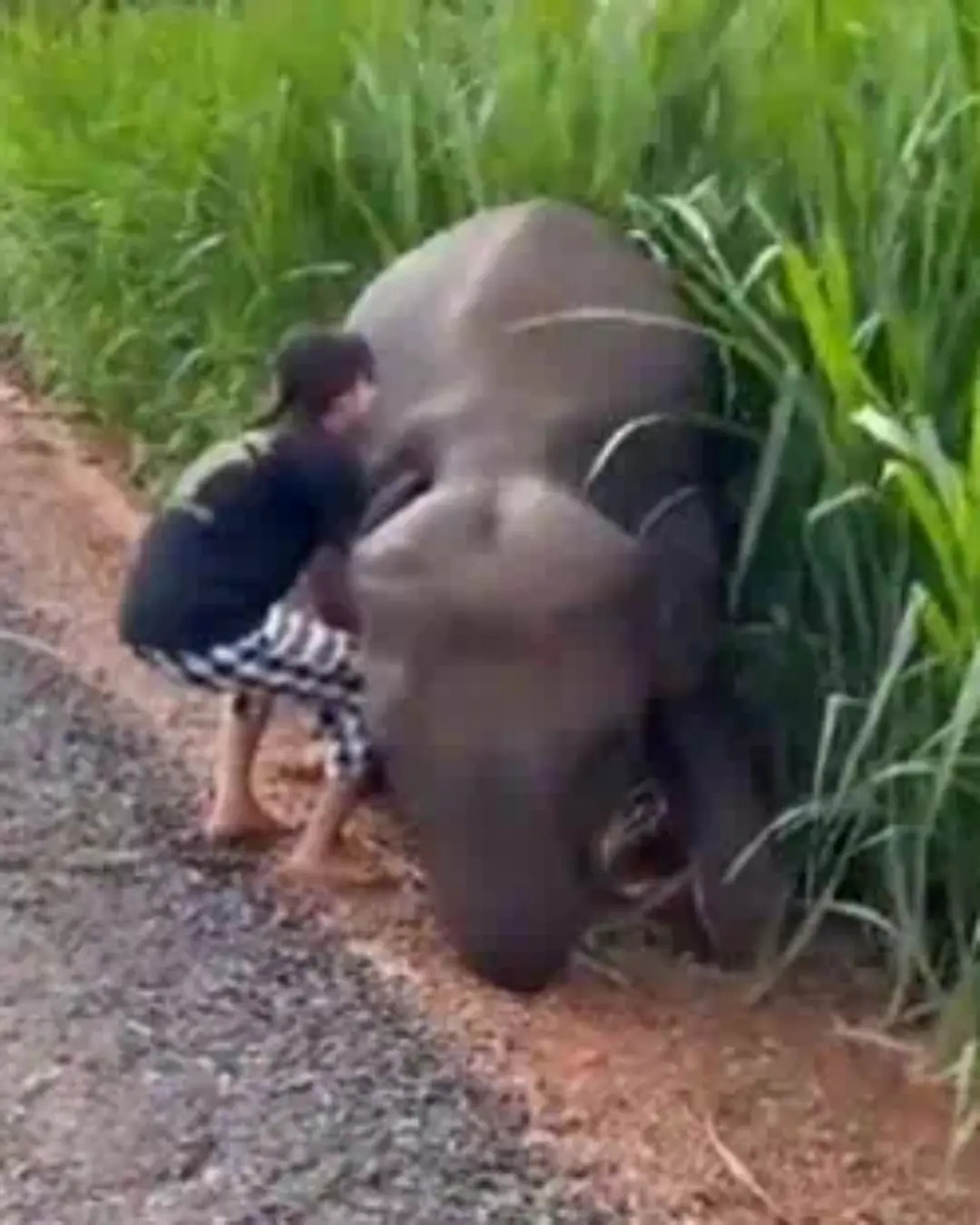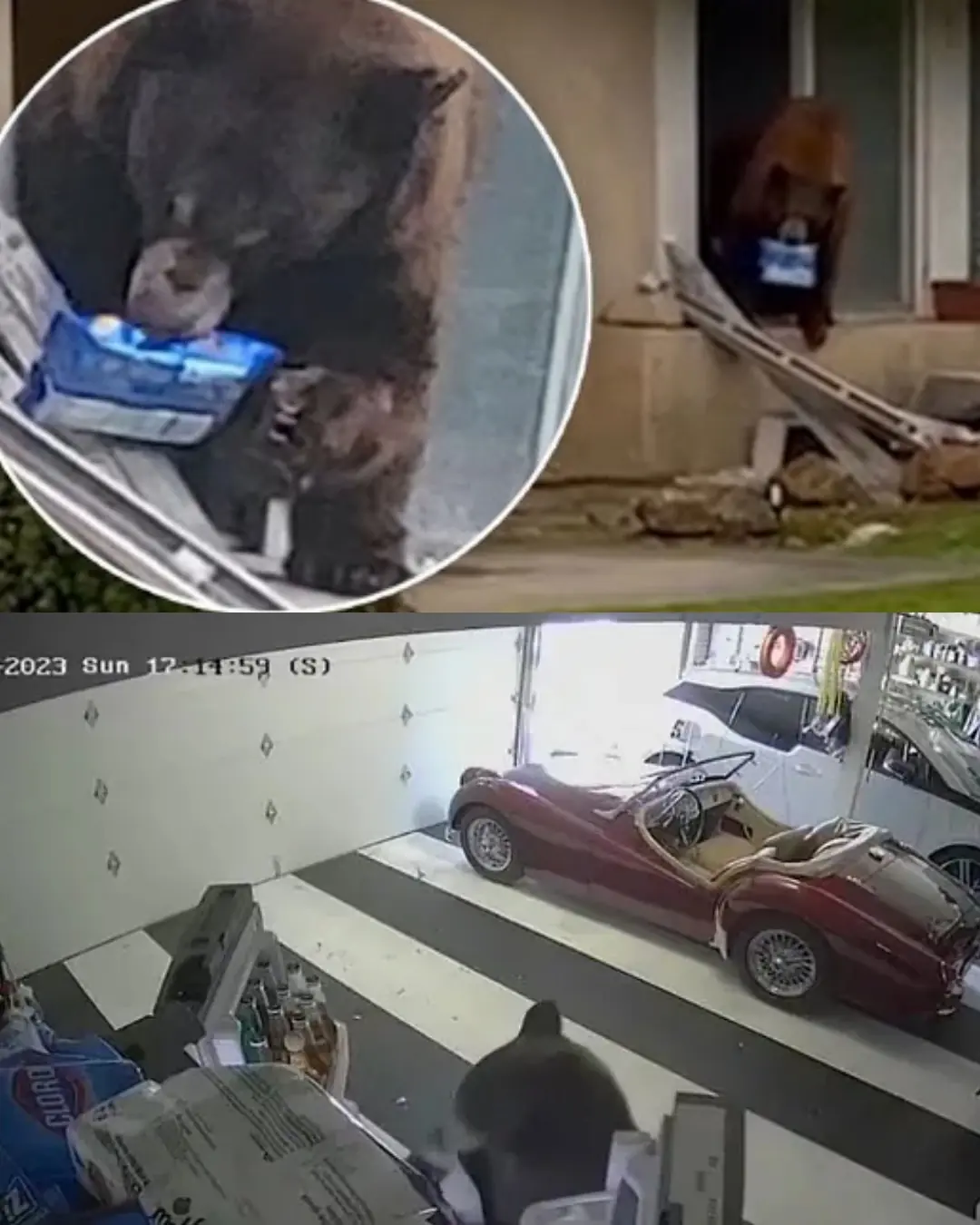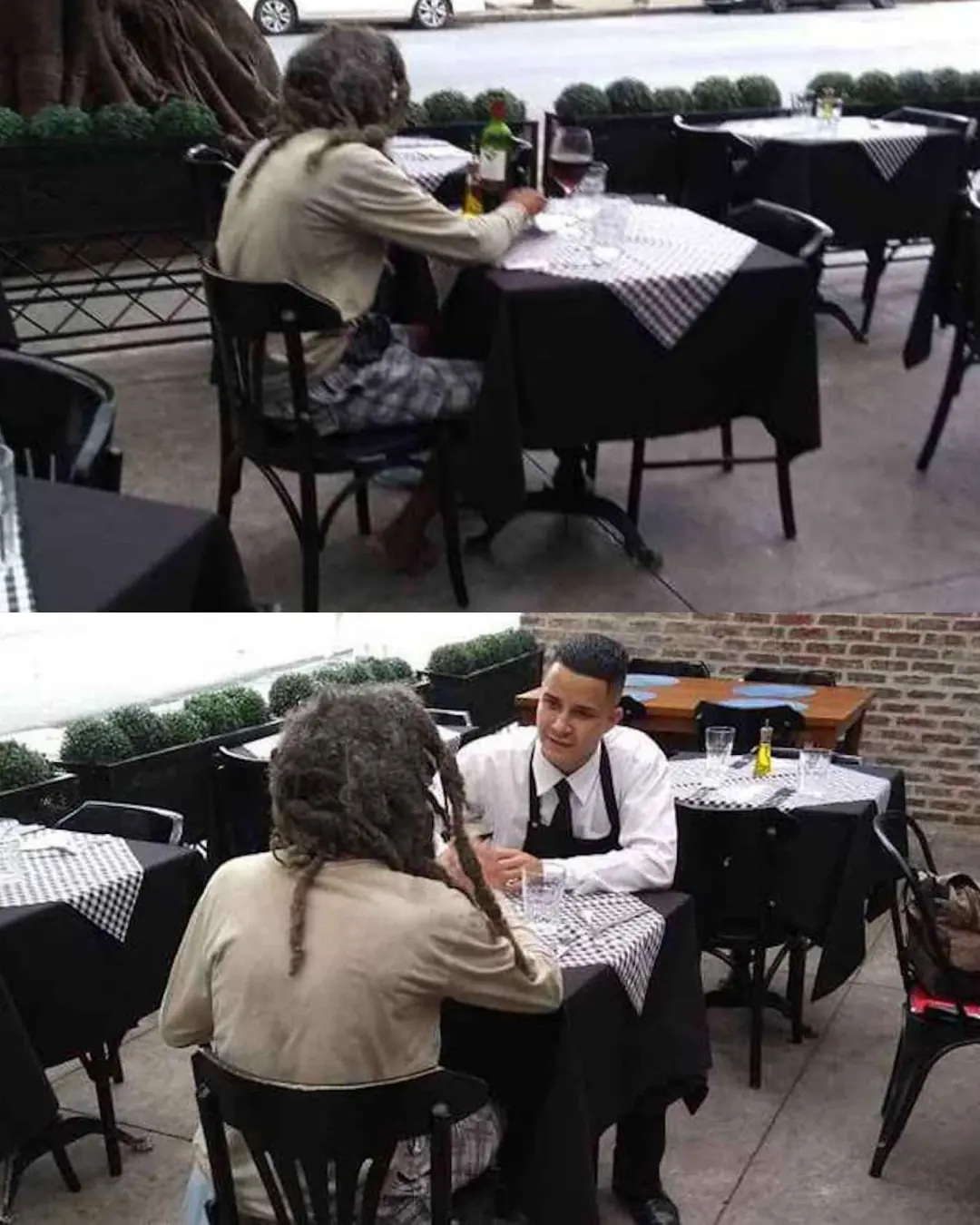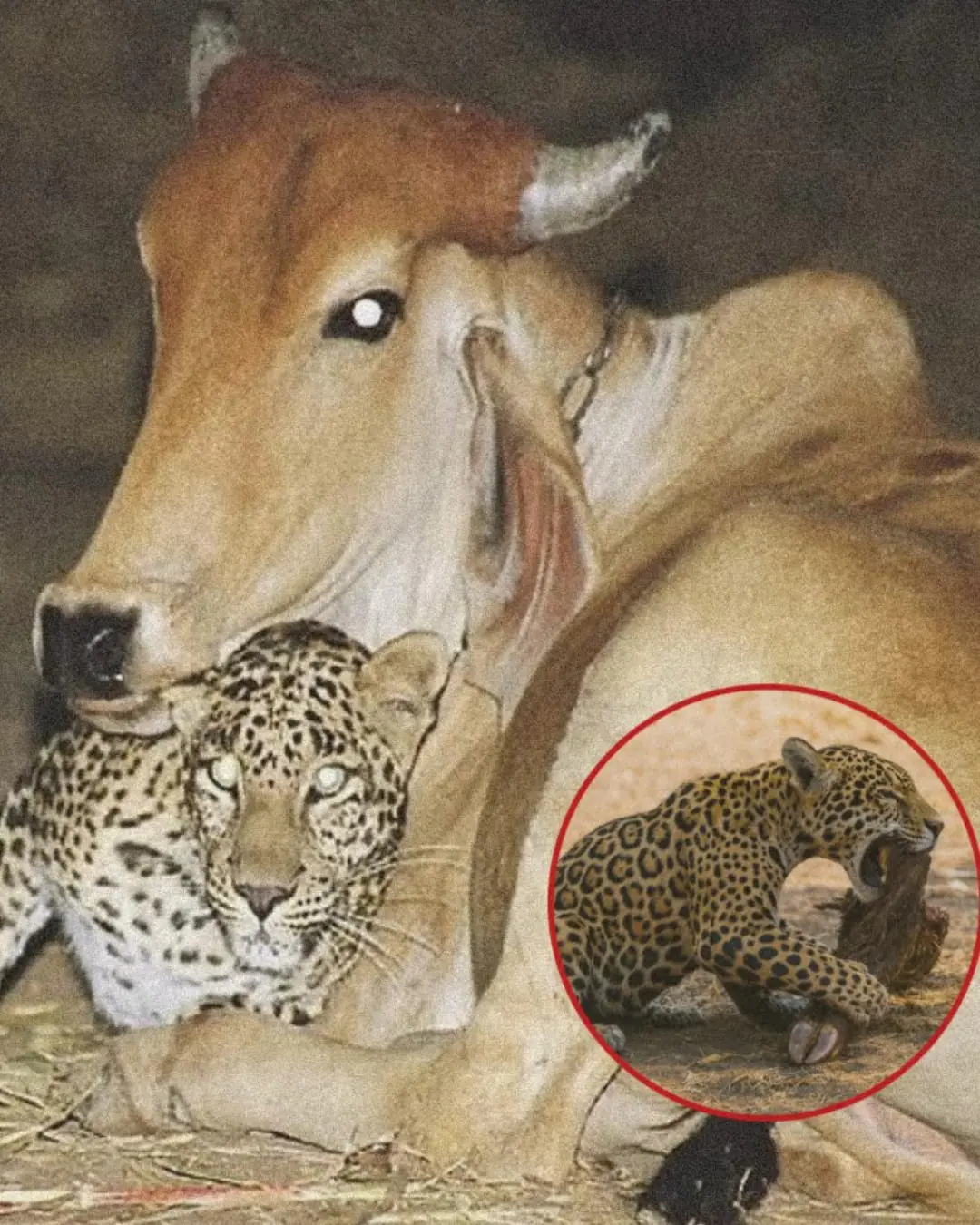
The Elephant Who Cleaned the Carnival Grounds
When the last echoes of music and laughter faded from the county fair, the carnival grounds slipped into a heavy, expectant silence.
It was long past midnight. The flashing lights of the rides had flickered out one by one. The Ferris wheel groaned to a halt. Food stalls were shuttered, cables coiled, and animals locked away for the night. Crew members packed up with the weary rhythm of those who’ve done it all before. The scent of funnel cakes and kettle corn lingered in the air, sweet and nostalgic, mixing with the earthiness of trampled grass and spilled soda.
Popcorn bags fluttered in the wind. Paper cups and crushed cans lined the walkways. Wrappers clung like stubborn ghosts to the fences. Cleanup was a problem for the morning.
Or so they thought.
By dawn, as the first blush of sunlight touched the fairgrounds, workers arrived ready to tackle a long day of trash collection and restoration. But what greeted them wasn’t chaos. It wasn’t the mess they’d braced for.
It was immaculate.
Every path was clear. Every bench, every ride, every stall—spotless. As if the carnival had packed up not just its rides, but every trace of itself. Confused murmurs spread among the staff. Had someone worked overnight? A private crew? A prank?
Perplexed and curious, the team turned to the security footage. The cameras, still rolling during the off-hours, held the answer.
And what they discovered would stop them cold.
Sometime after midnight, when the lights had dimmed and the world had settled into sleep, one of the elephants had quietly slipped out of his enclosure. There was no panic. No destruction. No signs of mischief.
Instead, he walked calmly into the heart of the fairgrounds.
And began to clean.
With deliberate grace, his trunk curled around litter—popcorn bags, crushed cups, sticky wrappers—and carried each one to the large trash bin near his pen. Over and over, he moved through the dark, lit only by the pale glow of the overhead lights. He worked with patience. With care. Methodically sweeping the grounds in silence.
Not once did he rush. Not once did he stop before the work was done.
The footage captured it all. An animal most associated with wildness and spectacle, engaged in a quiet act of order. When the fairgrounds were finally pristine, he turned and walked back to his enclosure, settled in, and went to sleep.
When the video was posted online, it exploded.
The world didn’t just watch—it felt it.
Comments poured in by the thousands. Some were lighthearted.
“Cleaner than my roommates.”
“Hire this guy for city council.”
Others were heavier, more reflective.
“If an elephant can clean up after us, what’s our excuse?”
“Proof that intelligence doesn’t come with a timecard or a species.”
But quickly, the tone shifted. The internet’s usual delight gave way to questions. Hard ones.
Animal rights organizations seized on the footage, not for its novelty, but for what it revealed. This wasn’t just a quirky viral moment. It was a glimpse into the inner life of a creature too often dismissed as a tool or attraction.
“If he has the awareness to clean up after humans,” one advocate said, “then humans have a moral duty to treat him with dignity.”
Petitions began circulating, demanding the elephant be retired from the circus and relocated to a sanctuary or wildlife reserve. Journalists picked up the story. Celebrities reposted the footage. The phrase “midnight janitor” began trending alongside hashtags like #FreeTheElephant and #CompassionInChains.
And at the center of it all was a single act of quiet care.
For the carnival workers, the moment was humbling. The task they’d dreaded was already complete—by someone they’d never expected. By someone they had seen only as a showpiece. A part of the backdrop.
But now the world saw him differently.
No longer a nameless act in a traveling show, but a figure of profound intelligence and quiet defiance. He hadn’t escaped. He hadn’t rebelled. He had simply… cleaned.
And in doing so, he sparked a conversation far bigger than trash.
Elephants are known to mourn their dead, comfort their companions, and recognize themselves in mirrors. They hold grudges. They remember kindness. They nurture their young and form lifelong bonds.
But this? This was different. This was something deeply human. Or perhaps more than human.
It was stewardship.
It was empathy.
It was an act of deliberate care in the absence of reward or audience.
It struck a chord that data and documentaries often miss. A truth that was felt rather than taught.
In the stillness of the night, when no one was watching, a captive elephant made a choice.
Not to take. Not to flee.
But to give.
To clean up after the people who hadn’t cleaned up after themselves.
To do the job no one wanted to do.
Without anger. Without bitterness. Simply because it needed doing.
And maybe that’s why the story won’t fade quickly.
Because in a world that often moves too fast to notice the quiet, this was a reminder of what we overlook—not just in animals, but in ourselves. The dignity of care. The power of small, unglamorous kindnesses. The question of who we are when no one is watching.
The fate of the elephant is still unfolding. Whether he finds sanctuary or remains under human ownership, his story has already changed something fundamental in how we see animals—and perhaps how we see ourselves.
Because sometimes, it’s not the grand gestures that move us.
Sometimes, it’s a single elephant.
A trunk full of trash.
And a silent choice that echoes louder than any roar.
News in the same category


Oreo the Cookie-Loving Bear of Monrovia.

The Last Act of Love: Jaelen Green’s Heroic Promise

I Came Home to Find All My Furniture Tossed on the Lawn for Free – And Found the Perfect Way to Get Back at My

Help Little Maja Win Her Fight for Life

My In – Laws Used Our Guest Room as a Storage Unit for Years and Then Blamed Us for Moth Damage – We Had a Clever Way to Make Them Pay!

On My Wedding Day, My MIL Decided to Kick My Parents Out Because They ‘Didn’t Pay for It’ – But the Fallout From Her C.r..ue.l Decision Left Her Regretting It

My Husband Traded Our Family of Four for His Mistress — Three Years Later, I Met Them Again, and It Was Perfectly Satisfyingg

“She Lost a Kidney, But Not Her Courage” — Help Little Zuzia Win Her Fight for Life

I Finally Saved Enough for My Dream Car — But What My Husband Did Next Left Me Shaking

The $10 Meal That Restored Everyone’s Faith in Humanity.

My Ex Skipped Our Daughter’s Recital to Go to Disney with His Stepdaughters — I Made Sure He Regretted It

The Girl Who Jumped the Fence.

The Day a Truck Driver Stopped for Kindness.

My Mom Vanished on Her Wedding Day — Years Later, I Found Her Dress at a Garage Sale

My Husband Kicked Me Out with Our Newborn Twin Daughters – 15 Years Later I Was Left Speechless When I Saw Him Again

3 Stories of Secrets Kept by Children That Changed Family Lives Forever

Man Offered to Help Me with My Baby on a Plane — I Was So Grateful Until I Saw What He Did to My Son

The Jaguar and the Cow: A Parable of Trust and Temptation
News Post

What Happens to Your Body When You Stop Eating

The #1 Drink to Prevent Foamy Urine — Plus 7 More Your Kidneys Will Thank You For

The #1 Most Effective Remedy for Dental Plaque (And How to Beat Tartar at Home)

JUST 1 CUP FLUSHES POUNDS OF TOXIC WASTE

Just 2 Nuts a Day Can Support Your Thyroid, Help With Weight Loss, and Balance Blood Sugar

Zinc Deficiency Triggers Inflammation in Your Body — Here’s What to Eat to Fix It

CLEANSE CLOGGED ARTERIES WITHOUT MEDICATION

The Woman Who Pulled Hope from the Mud.

Oreo the Cookie-Loving Bear of Monrovia.

The Last Act of Love: Jaelen Green’s Heroic Promise

I Came Home to Find All My Furniture Tossed on the Lawn for Free – And Found the Perfect Way to Get Back at My

Help Little Maja Win Her Fight for Life
7 Benefits of Corn Silk and How to Use It

My In – Laws Used Our Guest Room as a Storage Unit for Years and Then Blamed Us for Moth Damage – We Had a Clever Way to Make Them Pay!

“Jesus Is Our Anchor”: Texas Parents Share Heartbreaking Update as Their Daughter Audrey Fights for Her Life 💔🙏

On My Wedding Day, My MIL Decided to Kick My Parents Out Because They ‘Didn’t Pay for It’ – But the Fallout From Her C.r..ue.l Decision Left Her Regretting It

My Husband Traded Our Family of Four for His Mistress — Three Years Later, I Met Them Again, and It Was Perfectly Satisfyingg

“She Lost a Kidney, But Not Her Courage” — Help Little Zuzia Win Her Fight for Life

I Finally Saved Enough for My Dream Car — But What My Husband Did Next Left Me Shaking
